Current Research
Faculty and students at Algoma University are engaged in a variety of dynamic and cutting-edge research projects that are improving our communities, creating outstanding learning experiences for our students, and contributing to our understanding of the world around us.
Funding from the Federal Government’s Research Support Fund helps alleviate indirect research costs, allowing our faculty to be involved in all forms of research – from bench-based study, through to community-based participatory action research, to the creative process.
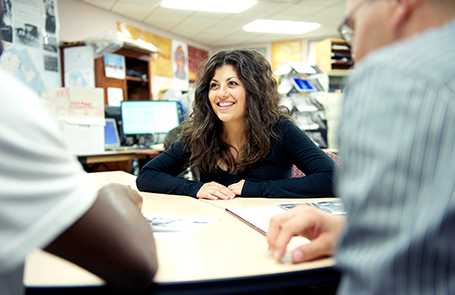
Meet Our Researchers
At Algoma U, we are engaged in cutting-edge research that contributes to enhancing knowledge across the Humanities, Sciences and Social Sciences, and creates outstanding learning opportunities for our students.
Researchers

Choose a Researcher
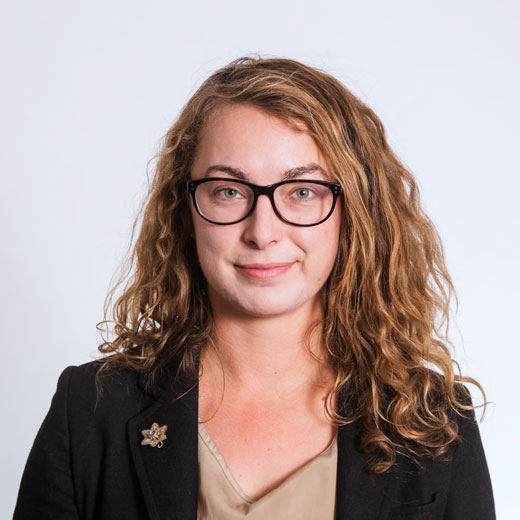
Andrea Pinheiro
Finding Inspiration in Northern Ontario
Initially, Professor Andrea Pinheiro had no plans to move to Northern Ontario. Like many other aspiring artists, her younger self had set her sights on the trendy Canadian west coast, where she would earn her undergraduate and graduate degrees before setting up a permanent studio to develop her works. However, time spent in Elliot Lake piqued her interest in the cultures, lands, and industries of the north.
In high school, Pinheiro had an interest in both visual arts and environmental causes. When it came time to decide what to pursue in higher education, Pinheiro settled on art, knowing that she could still pursue environmental issues through her artistic expressions. “Working with art means working with people’s perceptions at a deeper level, ideally,” she begins. “Art is about being in some sort of dialogue with people’s perceptions and hopefully helping the world at large.”
After coming to this decision, Pinheiro was introduced to White Mountain Academy of the Arts, a small art school located in Elliot Lake, Ontario. “I never expected or intended to move to Northern Ontario. I had always planned to go to Vancouver in high school but this school came up. The types of things they were doing included a lot of indigenous practices or Anishinaabe traditional practices in the curriculum, but also cutting edge western studios, both of which interested me. White Mountain Academy had a very similar mandate to [Algoma] in terms of Anishinaabe cross-cultural education and working with indigenous knowledge.”
Plus, being located in Elliot Lake, Pinheiro was directly exposed to the various industries, including the neighbouring uranium mines, which peaked her environmentally conscious mind. Thus, much of her earlier work focused on radioactivity and photography, highlighting the nuclear industry, uranium mining, waste storage facilities, among other subjects. “Nuclear issues have always been an important thread in my work. I’ve always been interested in it since high school and when I lived in Peterborough. It was a strange dichotomy living in this beautiful place but also knowing that it was permeated by this invisible radioactivity and the way it just sits up there.”
Unfortunately, White Mountain Academy moved from a four-year to a two-year degree in Pinheiro’s third year. While she wasn’t able to obtain a Bachelor of Fine Arts degree at the institution, the teachings she was exposed to had a profound impact on her and continue to influence her work today.
From Elliot Lake, Pinheiro transferred to the University of Alberta to complete her undergraduate degree, but also to pursue her Master of Arts in printmaking. She later moved to Vancouver, as she had initially dreamt in her high school days. She worked in British Columbia for five years, working in galleries, pursuing her own practices and curating various exhibitions. “It was financially difficult. Plus there was this post-Olympic funding relapse happening after the Vancouver Olympics, so positions were diminishing.”
Having enjoyed her time in Northern Ontario in Elliot Lake, Pinheiro applied for a position in Algoma University’s ever-growing Fine Arts program. “Because I had experienced so much Anishinaabe culture and lifeways through White Mountain, the mandate of the University was really important to me. I knew about the residential school history and the capacities for working with that, and the archives also really interested me.”
Pinheiro began work at the University in 2011. In 2012, she purchased a large business at 180 Gore Street, which doubles as her home and a public gallery space. Named 180 Projects, she purchased the space to allow students to showcase their work, but also to provide emerging artists from across Canada with additional gallery space in the Sault. Renovations to the abandoned facility have been extensive and are still ongoing. “180 Projects has been really important to me. It’s important for students to have an avenue to showcase their work. One thing that is really unique about our program is that final solo thesis. Instead of just creating a few good pieces, our students are doing something different and thinking about creating an entire experience for the viewer. You won’t find that elsewhere.”
Since coming to Algoma, Pinheiro has continued to depict the invisible and visible through a variety of a mediums, and has exhibited her work nationally and internationally. In 2013, Pinheiro published a project she first began pursuing during her graduate studies. “During my grad work, I was looking at issues around different nuclear archives that deal with photographs of the bomb testing sites of Nevada. At that time, I came across this list of different names that had been assigned to all of the bombs tests throughout history. I had been really fascinated by the list that came with the bombs. I cut it into stencils and painted it on walls. But I didn’t feel like it was the right format for displaying it and nor did it give space to the bomb tests that didn’t have names. I think about 1,200 out of the 2,500 had names assigned to them.”
Wanting to give the bombs the appropriate forum, she created the Bomb Book. “It ended up being 12 volumes to cover all of the bombs. It was one page per name. For the bombs that aren’t named, they are given a blank page. Each book was about 200 and some pages. I have one copy here and most are out in BC, one is in the national gallery library. There were 10 copies and two artist proofs.”
More recently, Pinheiro is working with material history, detailing the relationship between objects and images. She’s hoping to use photography and drones to highlight the tailing sites in Elliot Lake. “So much of the material that went into the American nuclear program is from Elliot Lake. A massive amount of it, actually. When mining happens, people think about that but forget about the material connection to the end product. I’m interested in how other materials and places that don’t seem linked retain their linkage through histories.”
Aside from working with print, mixed media, paint, ink, video, and installation, Pinheiro is also working to develop new courses at Algoma U and with Anishinaabe Studies and Shingwauk Kinoomaage Gamig (SKG). The new courses, which are similar to those she took herself while at White Mountain, are slated to begin in the spring of 2017. “There will be a lot of opportunity for people to get hands on work with traditional Anishinaabe art practices.”
Pinheiro encourages students to study visual arts at Algoma for a variety of reasons, but cites the University’s special mission as the most important. “There are unique opportunities to be engaged in the growing conversation that’s happening in the Canadian and international art world where settler and indigenous artists can work around issues of reconciliation through art as a vehicle. Because we have the residential school centre here and the mandate of the University, the capacity to be involved in that conversation is quite incredible. You can be involved in this community and make things happen.”
For more information on Pinheiro, please visit her website.
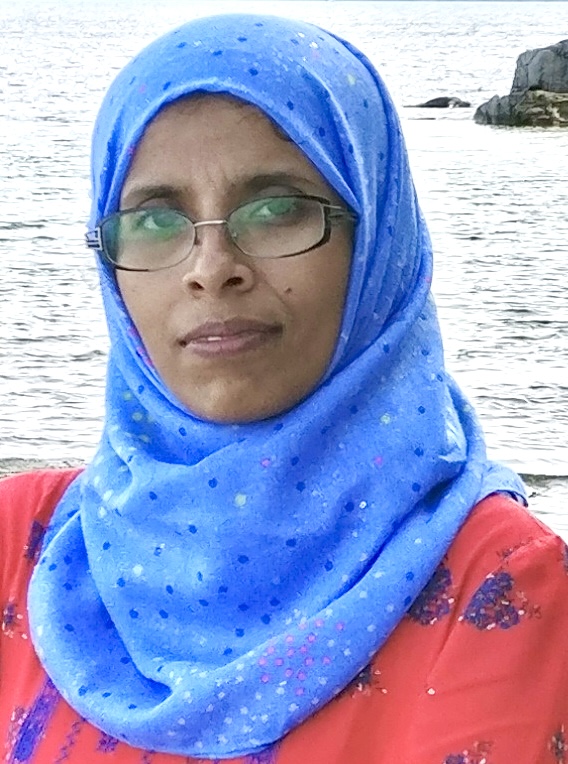
Dr. Ajmery Sultana
Dr. Ajmery Sultana received her Ph.D degree from the Department of Electrical and Computer Engineering, Toronto Metropolitan University (formerly Ryerson University), Toronto, ON, Canada, in 2018. She served as a postdoctoral fellow at the Department of Computer Science at Toronto Metropolitan University from 2018-2019. She worked as part-time faculty at Toronto Metropolitan University, Ontario Tech University and Algoma University, ON, Canada from 2019-2022. She joined as an Assistant Professor in the School of Computer Science and Technology, Algoma University (Brampton Campus) in August 2022 where she is currently continuing her research and teaching career successfully.
Her journey with IEEE began during her graduate studies at Toronto Metropolitan University, where she discovered IEEE as an invaluable platform for publishing research work and expanding professional networks. Volunteering for various IEEE conferences and summits further enriched her knowledge and connections within the field. In 2021, she started volunteering the role of Vice Chair at IEEE Vehicular Technology Society (VTS) in the Toronto Section, where she organized seminars and workshops, fostered collaboration with other chapters, and actively contributed to membership development. Recognized for her dedication, she was nominated as an IEEE Young Professional Ambassador for VTS in 2024, empowering emerging leaders within their communities. Currently, she is serving as Vice Chair for IEEE Communication Society in the Toronto Section, striving to advance the Society and deliver high-quality products and services.”
Her research interests encompass radio resource management for 6G-Internet of Things (IoT), Artificial Intelligence (AI)-driven solutions for communication and networking systems. Recently, there has been significant attention from researchers in the Electric Vehicle (EV) domain toward Blockchain technology. Her research portfolio also includes Blockchain-enabled energy trading in Electric Vehicle (EV) infrastructure. Furthermore, she is exploring the rapidly growing field of quantum technology, focusing on Towards Secure and Efficient Communication: Leveraging Quantum Technologies.
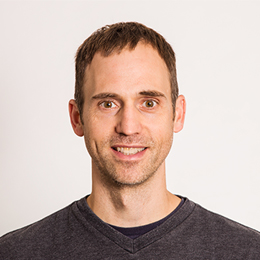
Dr. Brandon Schamp
Head of the School of Life Sciences and the Environment
Dr. Schamp’s research is focused on answering questions related to why natural systems contain so many species, and relatedly, why no single species takes over. He is also interested in understanding why some species are more common than others, and how processes like competition and dispersal shape natural systems.
View Dr. Brandon Schamp’s website to learn more about his research.
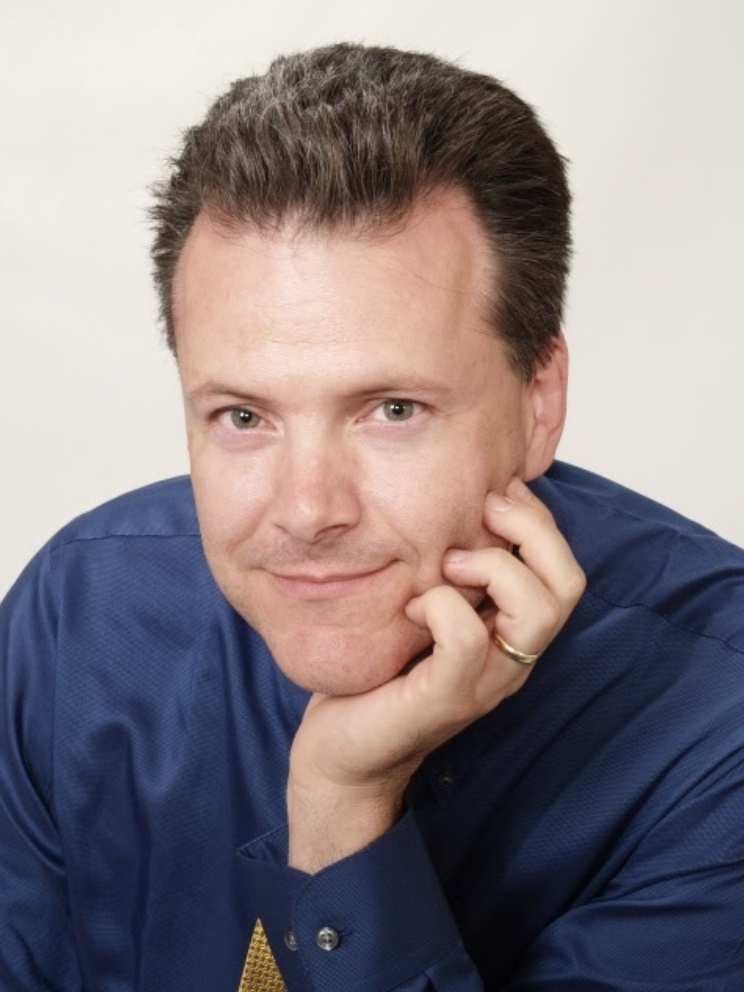
Dr. Edward Turgeon
Dr. Edward Turgeon’s past academic appointments have included Associate Professor at HARID Conservatory, Director of Collaborative Arts, Director of Keyboard Studies and Associate Professor of Music at Florida Atlantic University. He currently serves as Professor of Music, Director of Music and Artistic Director of Great Lakes International Summer Music Institute at Algoma University.
Turgeon won first prizes in major international competitions for piano duos including the International Schubert Competition for piano duos (Czech Republic, 1995) and Murray Dranoff International Two Piano Competition (Miami, 1997). Over the last 25 years, he has performed more than 500 concerts worldwide with his wife Anne as member of Canada’s internationally acclaimed “Duo Turgeon”, and with Canadian Piano Quartet members Anne Turgeon, Elizabeth Laich and Marcel Bergmann. His numerous recordings can be heard on Marquis, ClassXDiscs and Vanguard Classics labels.
He has performed at Carnegie Hall, Yong Siew Toh Conservatory, the Concertgebouw of Amsterdam, Krakow Philharmony Hall, International Pianistenforum Germany, San Francisco International Music Festival, Chicago Duo Piano Festival, Montreal International Duo Piano Festival, and throughout Russia, where Duo Turgeon’s three visits since 1999 include most major Russian cities along the Trans-Siberian Railway line. Recently, Duo Turgeon’s recording “Latin American Journey” received a special citation from Instituto Piano Brasileiro. Here, through the duo’s consultation the widow of Francisco Mignone, Maria Josephine Mignone, the Turgeons released first recordings of works for two pianos by the celebrated Brazilian composer Francisco Mignone. The Turgeon’s other recordings have received 5-star ratings from CBC, La Scena Musicale and Wholenote magazines.
As an adjudicator, Turgeon has judged competitive festivals in Ontario (Stratford, Windsor, London, Toronto, Markham, Elliot Lake), Manitoba, provincial finals of Ontario Music Festival Association, Canadian Music Competition national finals, International Liszt Compeition (Chicago), Premio Brasil (Miami), Isidor Bajic International Piano Competition (Serbia) and Murray Dranoff International Duo Piano Competition. Upcoming judging includes the Ottawa Kiwanis Music Festival and the International Piano Duo Competition in Bialystok, Poland.
Dr. Turgeon has been heard on classical music radio stations around the world, including CBC Radio, National Public Radio (“Performance Today”), BBC, Australian Broadcast Corporation, and the PBS television documentary “Two Pianos – One Passion”. Turgeon’s commitment to contemporary performance and research has led to world premiere performances of new works by Libby Larsen, John Corigliano, Aaron Copland and Juno award winning composer Derek Charke, who was commissioned by Duo Turgeon to compose “Drift”, a work inspired by Northern Ontario ruggedness and Algoma region weather phenomena. His next commission will be a major two piano work by Order of Ontario recipient Barbara Assiginaak, a direct descendant of Chief Shingwauk.
Dr. Edward Turgeon has served as senior examiner for RCM’s College of Examiners since 1990. In his thirty-one years of service to the organization, he has supported more than 10,000 students across Canada, hearing their performances in the context of graded piano examinations (9500 of which were heard in-person), providing handwritten reports in support of progress made, while providing recommendations for further refinement.
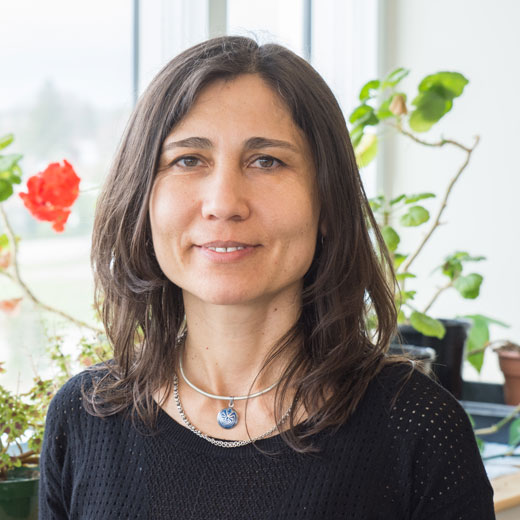
Dr. Isabel Molina
Credentials: BSc (National University of La Plata, Argentina), MSc (National University of La Plata, Argentina), PhD (Michigan State University)
For more information on Molina’s research, view her website: http://isabelmolina.wixsite.com/website

Dr. Jennifer Foote
Credentials: BSc Hons (Saint Mary’s University), MSc (Dalhousie University), PhD (Queen’s University)
For more information on Foote’s research, visit her website.

Krista McCracken
Decolonizing and Indigenizing the Academy
The Shingwauk Residential Schools Centre (SRSC), housed in the East Wing of Algoma University’s campus, is an invaluable research resource for residential school Survivors, students, academics, and community members. Third-year student Skylee-Storm Hogan has worked in the SRSC for almost two years, and it has provided her with notable opportunities to get involved in public history, archival studies, and even more impressively, to be published on a prominent Canadian history blog.
Hogan is Kanien’kehá:ka and is in her third year of studies, majoring in Law and Justice with a minor in Political Science. She has been working closely alongside Researcher/Curator Krista McCracken in the SRSC through her work-term placement. Hogan is responsible for assisting with digital and physical processing, event coordination, photography, and modifying digital and physical records. She also assists with residential school tours and meeting with visitors who frequent the centre. Her duties range in spectrum from museum studies to archival studies.
McCracken, who has been working with the SRSC since 2010, is responsible for the day-to-day archival administration and outreach programming. She creates educational programming for students from Grade Three through to post-secondary, organizes workshops, facilitates talks with Survivors, promotes access to the SRSC’s archival collections, among others.
Together, they share the significant responsibility of teaching university and community members about the implications and repercussions of the residential schools era. There has been a greater interest in understanding Indigenous history, including the legacy of residential schools, thanks in part to the Truth and Reconciliation Commission (TRC) of Canada’s Calls to Action. “It’s a very big responsibility, perhaps the biggest responsibility we have here at the centre,” begins McCracken, sitting in a chair in the SRSC. “People who are interacting with Indigenous communities need to understand the history of residential schools and colonialism in Canada and the ongoing impacts of those systems in Canada. Learning the historical context is a crucial part of being able to properly interact and have a dialogue.”
McCracken notes that they have had many professional organizations frequent the centre over the past year, including those from the Government of Ontario, local legal clinics, the Northern Ontario School of Medicine, among others. Typically, these organizations seek tools and information to better understand the Indigenous communities with which they work.
Aside from her work with the SRSC, McCracken contributes to publications like Canada’s History and participates in the prominent Canadian-based website Active History, which demonstrates how historical matters of the past influence today’s current affairs. “I’m part of the Active History editorial collective that manages the site and I also write regularly for the website on topics of my choice. My posts often relate to the work I’m doing here with the centre or focus more broadly on community-based archives.” McCracken was also part of the Active History team which organized the 2015 Social Sciences and Humanities Research Council-funded “New Directions in Active History” conference at Huron College.
In December 2016, Hogan and McCracken’s work in the SRSC collided on Active History. Together, they published “Doing the Work: The Historian’s Place in Indigenization and Decolonization”.
“The article was looking at what historians can do to follow the TRC’s recommendations, decolonize their research, and how they frame history,” says Hogan.
The article was inspired by Dr. Shuaneen Pete of the University of Regina. “Part of that came from when Dr. Pete was here on campus and talked about indigenizing the academy and decolonizing the academy… People are throwing these words around a lot and there is often some misunderstanding as to what they actually mean. There are these great ideas, but how on an everyday level, do teachers and scholars incorporate them into the classroom?” asks McCracken.
The co-authors provide thoughtful suggestions on how to decolonize and respectfully indigenize institutions. Suggestions include creating inclusive syllabuses that feature Indigenous and community-based scholars; acknowledging the traditional land that the place of learning is located on; partnering with Indigenous peoples in research; and engaging in culture-based learning activities.
Hogan and McCracken’s post received plenty of positive feedback. Historian Andrea Eidinger featured the article on her blog, Unwritten Histories, in her “Favourite Canadian History Blog Posts of 2016” feature. Eidinger deemed the duo’s article as one of her top three favourite Canadian history blog posts of 2016. “I was really excited about that,” begins Hogan. “I was working in the mall over the holidays and I had a professor from Algoma who teaches history tell me that he liked our article and that he was excited to see it on the round up.”
The reality of being published as an undergraduate student didn’t sink in immediately for Hogan. “My roommate was so much more excited than I was. And I let that sink in for a bit and then realized, okay, this is a big deal. It was cool to be able to post a link to something that I helped write. You don’t get that opportunity too often in your undergrad.”
Hogan and McCracken do have plans to write other articles. Right now, however, Hogan is exploring a topic on her own relating to active versus passive or peaceful activism. She is interested in how effective each platform has been by looking at successful historical movements in Canada.
Upon graduation, Hogan is hoping to continue working with a community-based archive. “I like working with community members and local stories because often there are very interesting stories which have never been told. You find out more about where you live and that often changes your perspective on places.”
For more information on the SRSC, please visit www.shingwauk.org.

Dr. Miguel A. Garcia-Ruiz
My Research Interests
My primary research interests lie in multimodal Human-Computer Interaction (HCI) and games user research (GUR). My research is focused on designing, developing and testing multi-sensory user interfaces (UIs) for video games and virtual reality (VR). For example, my current research includes simulation of physical wind in racing video games. My research also concerns Auditory Display. This branch of computer science studies the design and use of sound parameters and sonification to convey information at the computer interface. I am particularly interested in the design and use of Auditory Display in multimodal human-computer interfaces (including virtual reality environments), with the purpose of supporting learning of the sciences, among other applications.
My short bio:
Miguel A. Garcia-Ruiz graduated in Computer Systems engineering and obtained his MSc in Computer Science from the University of Colima, Mexico. Miguel received his PhD in Computer Science and Artificial Intelligence from the Centre for Research in Cognitive Science (COGS), University of Sussex, UK. Dr. Miguel Garcia-Ruiz took a virtual reality workshop at Salford University, England, and a computer graphics techniques internship at the Madrid Polytechnic University, Spain. Dr. Miguel Garcia-Ruiz has published various books and many scientific papers in academic journals, and has directed a video documentary about an introduction to virtual reality. Dr. Miguel was a Visiting Professor at the Faculty of Business and IT of the University of Ontario, Canada, where he participated in a research project on combating social deviations with technology, He was an Assistant Professor with the School of Telematics, University of Colima, Mexico. Currently, Miguel is an Associate Professor with the School of Computer Science and Technology from Algoma University, Canada. Dr. Garcia-Ruiz was a member of Mexico’s National System of Researchers (SNI) of the National Council of Science and Technology (CONACYT), and was awarded the Innovation Educator of the Year, given by the Sault Ste. Marie Innovation Centre (SSMIC) in 2015.
Personal web page: http://people.algomau.ca/garcia/
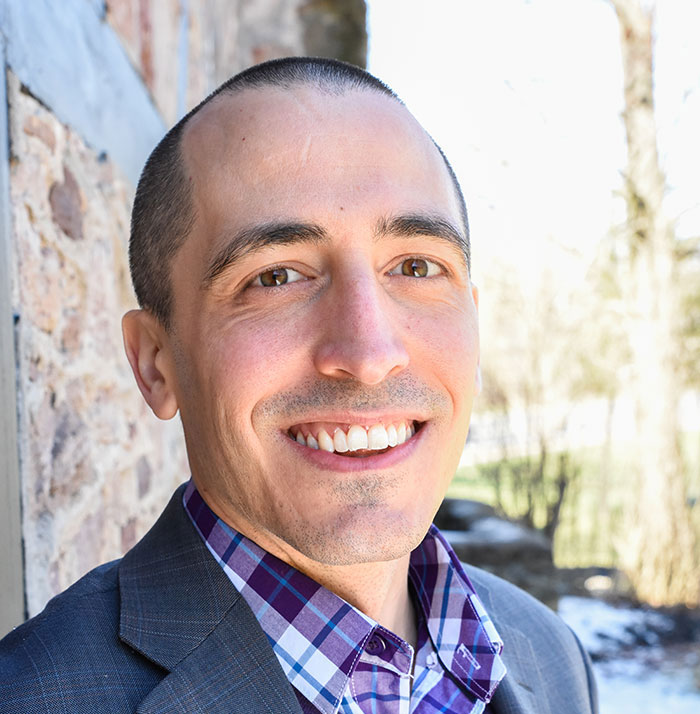
Dr. Michael DiSanto
Educational Background
- PhD (Dalhousie University)
- MA (Dalhousie University)
- Honours BA, First Class (Brock University)
Michael studies literature and philosophy of the long nineteenth century (1789 to 1914). He reads the novel as criticism, especially the ways in which the works of Joseph Conrad and D.H. Lawrence revalue, combat, and extend the art and thought of their intellectual and literary predecessors including George Eliot and Friedrich Nietzsche, among others.
Michael is the author of Under Conrad’s Eyes: The Novel as Criticism (McGill-Queen’s University Press, 2009), which is the co-winner of the 2012 Adam Gillon Book Award in Conrad Studies from the Joseph Conrad Society of America. He was the co-editor of The New Compass: A Critical Review. He has contributed articles to The Dalhousie Review, Studies in English Literature 1500-1900, Nineteenth-Century Prose, and The Cambridge Quarterly. With Brian Crick, he edited a selection of D.H. Lawrence’s criticism, the third volume in a series that includes collections of essays by Thomas Carlyle and Matthew Arnold, all published by Edgeways Books at www.edgewaysbooks.com.
Currently, he is working on a new collection of the critical essays of George Whalley (1915-83), the eminent and accomplished Canadian man of letters. The Complete Poems of George Whalley was published by McGill-Queen’s University Press (2016). He co-edited Selected Poems of George Whalley: A Digital Edition and Awake to Love and Beauty: Proceedings from a Conference in Honour of George Whalley. His work is funded by an Insight Grant from the Social Sciences and Humanities Research Council of Canada and Internship grants from the Northern Ontario Heritage Fund Corporation. In addition, he will publish a collection of Whalley’s letters home from war (1939-45) and a biography. Michael was a Co-Applicant in Editing Modernism in Canada.
He teaches courses entitled: Reading for Life; The Novel – The Bright Book of Life; Poetics, Politics and Revolution; Reading Darwin and His Contemporaries; Modern Ideas, Words, Styles; Contesting Modernity – Joseph Conrad and Friedrich Nietzsche; Politics and Literature; Crime and Punishment; Criticism, Aesthetics, Literature; and Four Quartets – The Quadraphonic Novel.
Teaching Philosophy
I encourage students to engage in critical conversations that include the works we read and the culture in which we live. Through ongoing concurrent dialogues involving works of literature, critical texts, students’ essays, and class discussions, I ask students to become increasingly aware of their own use of language and the writing and speaking of others. I challenge students to become alert to the implications of different ideas for our thinking and living as individuals and in a culture as a whole. The importance of recognizing and understanding the relationships among conflicting and competing perspectives, individual, political, cultural, disciplinary, and otherwise, is a major consideration in my teaching. To improve our critical judgement we must understand the ideas and values that inform different arguments in order to understand the value of our own. I hope my students will understand that criticism is not only practiced on written works, but also directed at our fundamental assumptions and the relationship between our values and those of other individuals and cultures. Rather than simply educate students to read poems and novels, I want to help them learn how to exercise their critical judgement in their life outside of the classroom in response to the many competing demands their life will make upon them. In short, I emphasize the continuities between the thinking that occurs when reading and discussing literature in the classroom and in our living as a whole.
Research Restores George Whalley’s Place in History
Dr. Michael John DiSanto of the English Department has devoted the majority of his academic career to the lives and works of literary luminaries Joseph Conrad and D. H. Lawrence. However, a conversation in the fall of 2009 with his undergraduate mentor, Dr. Brian Crick, inspired him to study George Whalley, a neglected Canadian icon of the twentieth century. Since then, DiSanto has spent his time working to highlight the life of the decorated war veteran, literary scholar, translator, biographer, talented amateur pianist, and writer for CBC radio.
DiSanto first became aware of Whalley as an undergraduate. “I first encountered Whalley when I was an undergraduate student at Brock University. Very likely it was in my third year. I was taking many courses from my professor Brian Crick,” he begins. “He gave me a book of Whalley’s essays to read and I did [but] I didn’t completely grasp or understand it at the time. I wasn’t ready for it. I was too young.”
Flash forward three years later: while at Dalhousie University, completing his PhD dissertation on Conrad, DiSanto revisited Whalley’s book, only this time, he made better sense of his arguments, ideas, and criticism. DiSanto’s dissertation, and later his book Under Conrad’s Eyes: The Novel as Criticism (McGill-Queen’s UP, 2009), became heavily influenced by Whalley. “Whalley had an important place, especially in the introduction.”
Moving his attention from Conrad to Whalley was a natural transition for DiSanto. Both were avid seamen, enjoyed their time on the open seas, and have similar ideas about storytelling, writing, and language. “There is quite a lot of overlap between the two. I also think the time I spent studying Conrad has better prepared me to understand Whalley and appreciate his life and the breadth of his work.”
A trip to Queen’s University Archives in the spring of 2010 aroused more interest in DiSanto. With over 10.3 metres of shelf space dedicated to the George Whalley collection, DiSanto knew a fascinating and forgotten life lived within the boxes on the shelf, waiting to be told.
From there, he began corresponding with Whalley’s wife, Elizabeth Whalley. He had the opportunity to meet her, before she passed away in 2013. “Over three years, we sent letters. I visited with her twice. On the first visit, we spent much time talking about what I would like to do. I had asked her if I could publish a collection of his poetry, a new collection of his essays, a collection of his letters, and a biography. Sometime after I left, she sent me a letter giving me permission. We spoke much about their life together. On the same trip I met Whalley’s youngest daughter Emily. And then I met the other two Whalley children, Katharine and Christopher, soon after.”
Now six years into the project, DiSanto has become thoroughly versed in Whalley’s life and works and is the leading scholar on Whalley. With the help of E-Services Librarian Robin Isard, he has published an extensive website, georgewhalley.ca, which includes a brief documentary of Whalley’s life, photographs, a timeline, audio recordings, and selections of Whalley’s original prose and poetry. The website is just one of the many publications being created by DiSanto to help entrench and memorialize Whalley’s place in Canadian history.
Whalley’s literary thinking is one of the many reasons DiSanto has set out to make Whalley a household name. “We readily recall some people from the twentieth century. Many of these people are very much of their time. Their ways of thinking are of the period rather than having a quality that may transcend the time. It seems to me that Whalley’s thinking is of that kind and that’s one of the reasons why he has fallen out of view. These other people receive a great deal of attention because they fit. I think Whalley doesn’t receive attention because he didn’t fit. In his essays especially, his thinking is part of a tradition that reaches as far back as Samuel Johnson in the eighteenth-century and continues through some of the writers of the nineteenth-century and the beginning of the twentieth. Whalley is a legend among those who knew him, but ought to be better known across the nation.”
But it’s not just his thinking. DiSanto also identifies Whalley’s involvement in World War II as extraordinary and needing to be recognized, and he hopes to one day make Whalley’s involvement known through a documentary film. During the Second World War, Whalley was an officer in the Royal Navy and later the Canadian Royal Navy, serving on destroyers. His first placement was on the HMS Tartar and he was involved in sinking the German battleship Bismarck, one of the most important engagements in the Atlantic. The day following that engagement, he bravely acted to save sailors from the stricken HMS Mashona, which was hit by German bombers and sinking. “English sailors were in the water. Whalley dove in, against naval rules, with a lifeline but without a life jacket… He was able to save one of the three sailors. One was already dead and the other died before he could get him back to the ship. For that bravery and courage he was awarded a Royal Humane Society Medal.”
His later involvement in the Royal Navy is largely shrouded in secrecy. Whalley was reassigned to the Naval Intelligence Division in London, England where he was tasked with planning and implementing the landing and retrieving of secret agents in Europe and designing a new surf boat. “The boat the Royal Navy was using was a design about 200 years old and the secret agents that were sent to Europe weren’t coming back. The navy couldn’t figure out what was going on. Whalley and some other officers went out to test the boats and found out that the waves were capsizing them so these secret agents were drowning. He designed a new boat that was used for the remainder of the war and probably for many years afterwards. He wrote a book on this for the Royal Navy.”
But even more impressive was Whalley’s creation of an acoustic beacon, called the FH 830. “This beacon allowed surface ships to navigate with pinpoint accuracy. They could be exactly where they needed to be for the amphibious landings during the invasions of Siciliy and Normandy. That’s a story that needs to be told. Canadians don’t know.” Though a historian recounted this impressive invention, credit wasn’t given to Whalley.
DiSanto plans to recount Whalley’s life in a biography. The work blurs the boundaries between the studies of History and English, which means DiSanto’s work doesn’t readily fit in just one category, but indeed is interdisciplinary. And Whalley doesn’t fit into just one category, as he was a writer, broadcaster, musician, teacher, officer, pioneer in the use of computers for literary studies, and more. He was, in many ways, a Canadian Renaissance man.
To bring new attention to Whalley, DiSanto co-organized a conference to honour the centenary of his birth at Queen’s University, 24-25 July 2015. A volume of proceedings entitled Awake to Love and Beauty, which contains writings by scholars and some people who knew Whalley, including notable Canadian writers Michael Ondaatje and Elizabeth Hay, will appear in the fall 2016.
DiSanto recently published Whalley’s poems, titled The Complete Poems of George Whalley (McGill-Queen’s UP, 2016). Many of Whalley’s poems were written during his time in the war or in its immediate aftermath and have never been read or seen by the public. “We ought to be studying these. He is the foremost Canadian poet of the Second World War. His poems are rich.” With Alana Fletcher and Robin Isard, DiSanto has co-edited a digital edition of a selection of Whalley’s poetry manuscripts and typescripts that will allow readers to explore Whalley’s process of writing. It will be published in September 2016.
He also plans to publish a collection of his letters. To date, DiSanto, along with his team of dedicated research assistants and interns funded by SSHRC (Social Sciences and Humanities Research Council of Canada) and NOHFC (Northern Ontario Heritage Fund Corporation) have transcribed over 3,000 letters, not even half of the entire collection. “He spent much time writing letters, not just professional, but letters to friends and family also.” Behind the Whalley website is an archival database in which DiSanto and the assistants are collecting digital images and transcriptions of all of Whalley’s extant writings, including unpublished documents and letters, from public and private collections. This work is pursued in collaboration with Queen’s University Archives and Algoma’s Engracia De Jesus Matias Archives and Special Collections.
DiSanto is unsure when he will be able to wrap up his work on Whalley. “There are many, many years ahead of me. I’m not sure if I’ll really ever be done with Whalley. When he becomes widely recognized, then maybe I’ll be done. Until then, I’m trying to make his legend, of which only a few are aware, a story that is a well-known part of Canada’s history.”
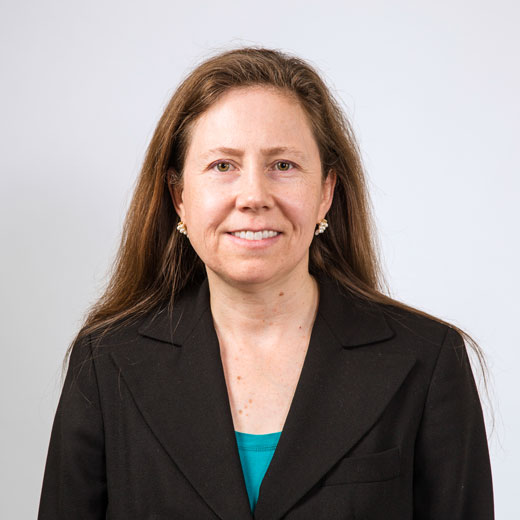
Dr. Nairne Cameron
Mapping the ‘Food Deserts’
Since 2008, Dr. Nairne Cameron, Associate Professor in the Department of Geology and Geography at Algoma University, has been an important voice in Sault Ste. Marie for food security. Her research has helped raise awareness about the various problems facing the Northern Ontario community in regards to food access.
From outside of Ottawa, Cameron was first exposed to the studies of geography and geology at an early age through family ties. Her father was a research scientist and geologist and her grandfather was a prospector who passed through the Algoma region. She attended Queen’s University for her Bachelor of Science in Geology and had the opportunity to work in remote areas, including the Northwest Territories and Labrador, conducting mineral exploration and regional and geological mapping. After graduating, she attended the University of Ottawa to earn both her graduate degrees in geography.
Her sudden change in interest from geology to geography came from living on the outskirts of a large urban centre and witnessing urban sprawl affecting surrounding rural farming. “I was really interested in urban and rural development because we lived on the outside of a city,” she says in her office on the third floor of the Essar Convergence Centre. “The city kept moving out but we had a lot of farms nearby. So I understood the farming situation but also the urban context. So I got into urban and rural development and transportation development and that’s what I moved into for my Master’s and then for my PhD.”
Following the successful completion of her doctoral degree, Cameron completed a post-doctoral fellowship at the University of Alberta. Her interests again changed. “My interests became explicitly around food access and food security. I’ve pretty much continued in that up until now.” The research she conducted, which she regards as being highly rewarding, involved working closely with Highlands community in Edmonton whose grocery store was closed 15 years before and determining the effects that closure had on the community. Cameron’s report was presented to Edmonton’s city council and was used to determine next steps by decision makers and was also widely referenced in Edmonton newspapers.
Now based in Sault Ste. Marie at Algoma U, Cameron is continuing this important work. In 2011, Cameron completed food mapping research on “food deserts”, which examined how food is distributed throughout the city, how people access food, and income levels. Then, in conjunction with the NORDIK (Northern Ontario Research, Development, Ideas and Knowledge) Institute and the AFN (Algoma Food Network), Cameron researched the opportunities and barriers to sourcing local (Algoma District) food. A public outreach map was produced from the study showing Sault Ste. Marie retailers who sold local food, and now an AFN directory incorporates information on retailers. Also, a forthcoming publication documents the research findings. “We have a lot of things in development here in the Sault, and while some of the things need to be coordinated more, I do think we’re making great strides in the right direction.”
More recently, she and two research assistants, Daryl Nelligan and Carter Vance, presented new research from a SSHRC funded project at the Canadian Association of Geographers in Halifax, Nova Scotia which explored the earlier findings further. While focusing on the lived experiences of individuals in Sault Ste. Marie, their research demonstrated how transportation amongst other issues has affected food access and distribution in the city. Plus, a governmental shift has occurred placing greater focus on affordable housing over food access, forcing social service agencies to provide clients with food skills without increasing budgetary spending.
In the future, Cameron is hoping to develop an application for mobile devices which readily identifies food sources within communities. “It’s still very preliminary, but I think it’s important to have this information readily available. A mobile application would provide people with information that is current, in real time, and informative. They can make better decisions and know all of their options in regards to food in the local context.”
With discussions of food at the forefront of her research, Cameron is not your typical geographer. While she does still work with maps and geographic information systems, and teaches courses on the latter, she encourages students to explore the field of geography due to its broad spectrum. “Physical geography used to be very prominent. We’ve conquered a lot of the physical challenges. Now the challenges in many ways are the human element, for example, the environmental problems. It’s important to look at the physical problems, but you really have to look at the human in relation to the physical,” she pauses. “A lot of people when they hear geography automatically think of maps and such. This isn’t the case. There are many avenues of the subject, and many other fields interact and relate with geography. It’s really useful to study from a geographical and place-based perspective because you’re looking at items from so many different lenses and perspectives, including an economic, cultural, social, and scientific perspective. Your options with geography are endless.”
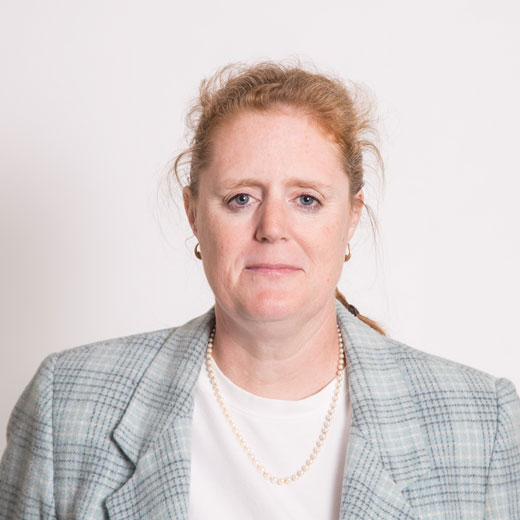
Dr. Nicola (Nikki) Shaw. FBCS, CITP
- PhD: University of Central Lancashire, England in collaboration with Oxford University Postgraduate Medical Education & Training (PGMET)
- Postgraduate Certificate: Health Research Methods University of Central Lancashire, England
- BSc(Hons): Business Information Systems with Management University of Central Lancashire,
England - Higher National Diploma: Business Information Technology University of Central Lancashire,
England
Having immigrated to Canada, in 2003, to work at the University of British Columbia; followed by spending four years as the inaugural Health Informatics Research Chair at the University of Alberta in collaboration with Capital Health Dr. Nicola (Nikki) Shaw’s primary academic appointment from 2010 – 2015, was as the ESRI Canada Research Chair with the Health Informatics Institute in Sault Ste. Marie, Ontario. Now that that 5-year appointment has come to an end she is continuing her academic career as a Professor with the department of Sociology, Algoma University and as the Family Medicine Resident Research Tutor with the Northern Ontario School of Medicine (NOSM).
She has over 20 years of experience in applied social research previously concentrated on developing an understanding around the implementation, use, and sharing of medical records; and program evaluation using health informatics as the lens through which health services are best explained, rationalised and understood. Throughout her research she has retained a focus on clinical governance, using her time as the ESRI Canada Research Chair to explore the use geographic information systems (GIS) to support the quality of care and quality of life for First Nations Peoples and rural; remote communities; specifically focusing on chronic diseases (including mental health & cancer) and adverse childhood experiences. She is a research methodologist often collaborating with other researchers in disparate disciplines as she is an expert in qualitative, quantitative and blended methodologies. She maintains an ongoing interest in health care provider professionalism, research and medical ethics.
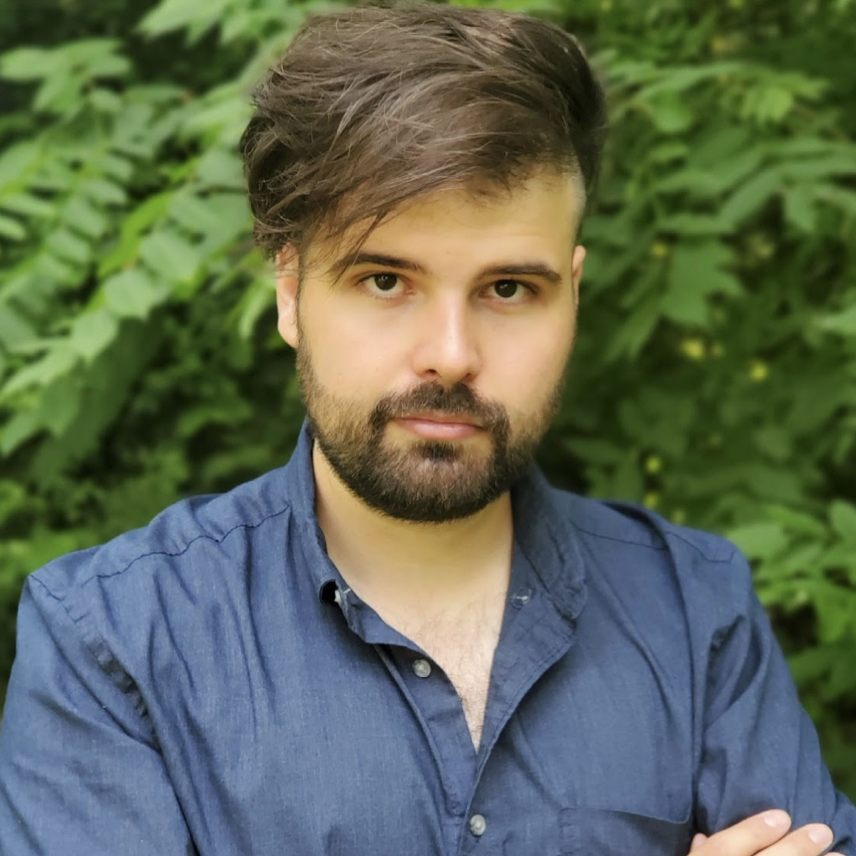
Dr. Nicolas Rouleau
Dr. Rouleau is a neuroscientist and bioengineer with a research focus on lab-grown brain tissue models of traumatic brain injury, neurodegeneration, and cognition. His primary interests include the origins and mechanisms of consciousness, intelligence, learning, and other cognitive features across neural and non-neural systems.
His most recent publications can be found below:
Rouleau, N., Cairns, D., Rusk, W., Levin, M., Kaplan, D.L. (2021). Learning and Synaptic Plasticity in 3D Bioengineered Neural Tissues. Neuroscience Letters. 750, 135799.
Rouleau, N., Murugan, N.J., and Kaplan, D.L. (2021). Toward Studying Cognition in a Dish. Trends in Cognitive Sciences. 25(4), 294-304.
Cairns, D., Rouleau, N., Parker, R.N., Walsh, K.G., Gehrke, L., and Kaplan, D.L. (2020). A 3D Human Brain-Like Model of Herpes-Induced Alzheimer’s Disease. Science Advances. 6(19), eaay8828.
Bonzanni, M., Rouleau, N., Levin, M., Kaplan, D.L. (2020). Optogenetically Induced Cellular Habituation in Non-Neuronal Cells. PLoS ONE. 15(1): e0227230
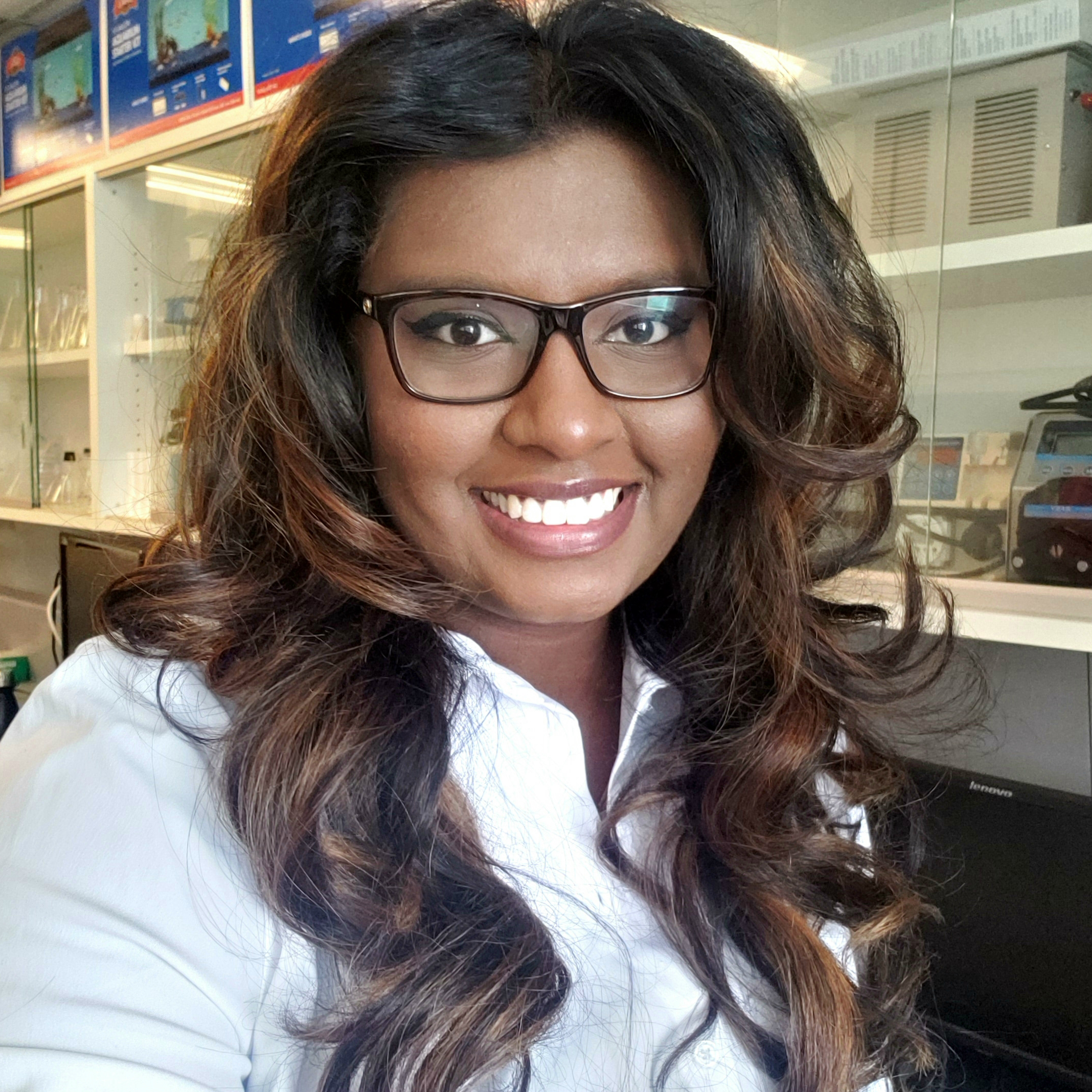
Dr. Nirosha Murugan
Dr. Nirosha Murugan is an Assistant Professor in the Department of Biology focused in the Health Sciences. She is an interdisciplinary scientist with a strong passion for research and teaching. From a top-down approach, her lab combines principles and state-of-the-art techniques from neuroscience, regenerative medicine, and cancer biology, to investigate how cancer cell fate can be reprogrammed into healthy cells using regenerative microenvironments, and in turn, how cancer microenvironments can modulate the function of distant organ systems such as the brain to induce cancer-related cognitive and neurological impairments.
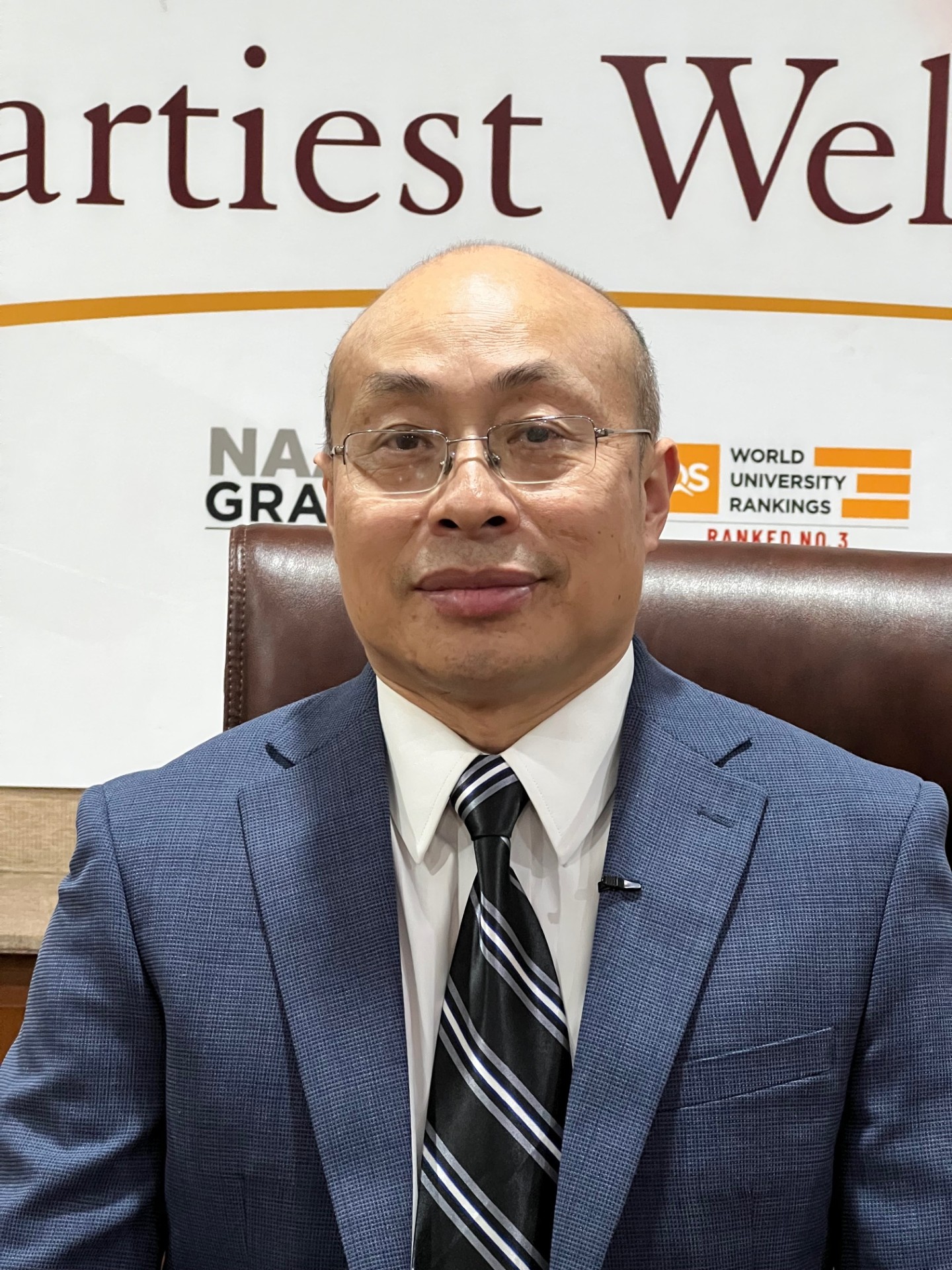
Dr. Simon Xu
Dr. Simon Xu
Director and Professor of the School of Computer Science and Technology.
Prior to joining Algoma in 2002, he was working at the School of Computer Science, University of Windsor. Dr. Xu earned his Ph.D. degrees from Wayne State University, United States, and the University of Liege, Belgium. Additionally, he serves as a guest professor at Wuhan University. His research focuses on software evolution, software development, program comprehension, and data analytics. Dr. Xu has led or co-led a few projects, partnering with industrial companies and other organizations including TheBrain Technologies, Gradient X, Nordstrom/Hautelook (USA), China Geology Library and China University of Mine and Technology (China). His research projects have been funded by NSERC, NSF, USA, National Natural Science Foundation of China, and Chinese Academy of Sciences. He has published more than 90 articles in refereed journals and conference proceedings and eight authored/co-authored books. Dr. Xu has chaired ten IEEE international conferences and served as the editorial board member for six international computer science journals. He has been invited to deliver seven keynotes at IEEE conferences.
Browser Dr. Simon Xu’s website to learn more about his research.

Dr. Paulette Steeves
Paulette Steeves. PhD – (Cree- Metis), was born in Whitehorse Yukon Territories and grew up in Lillooet, British Columbia, Canada. She is an Indigenous archaeologist with a focus on the Pleistocene history of the Western Hemisphere. In her research Steeves argues that indigenous peoples were present in the Western Hemisphere as early as 60,000 years ago, and possibly much earlier. She has created a data base of hundreds of archaeology sites in both North and South America that date from 250,000 to 12,000 years before present, which challenges the Clovis First dogma of a post 12,000 year before present initial migration. Dr. Steeves received her BA in Anthropology, Honors Cum Laude from the University of Arkansas at Fayetteville, and completed a two year internship with the Quapaw NAGPRA program during her undergraduate studies. In 2008 Dr. Steeves was awarded the Clifford D. Clark fellowship to attend graduate studies at Binghamton University in New York State. Dr. Steeves dissertation Decolonizing Indigenous Histories: Pleistocene Archaeology Sites of the Western Hemisphere
is the first dissertation framed in Indigenous Method and Theory in Anthropology within the United States. In 2011 and 2012 she worked with the Denver Museum of Nature and Science to carry out studies in the Great Plains on mammoth sites which contained evidence of human technology on the mammoth bone, thus showing that human were present in Nebraska over 18,000 years ago Dr. Steeves has taught Anthropology courses with a focus on Native American and First Nations histories and studies, and decolonization of academia and knowledge production at Binghamton University, Selkirk College Fort Peck Community College, the University of Massachusetts at Amherst, and Mount Allison University , she is currently an Assistant Professor in History and a nominee for a Canada Research Cahir in Healing and Reconciliation at Algoma University in Ontario.
To learn more about Paulette Steeves, please visit her website.
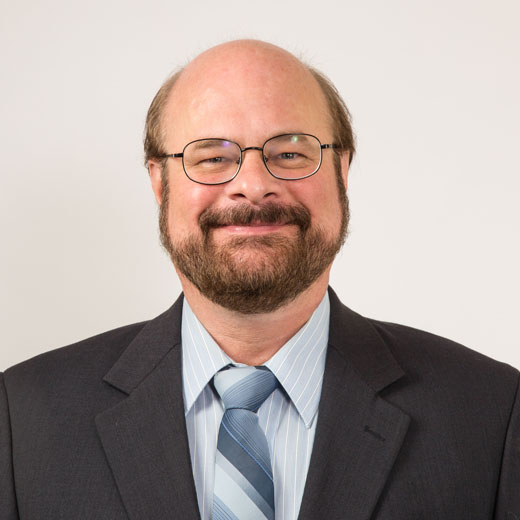
Dr. Townsend
Research Helps those with ALS Communicate
Nestled in the bottom floor of the West Wing lies one of the many hidden gems of Algoma University. Tucked away in the back corner, in the former art studio spaces, are the computer science faculty offices along with the Brain Computer-Interface Lab, home of Dr. George Townsend’s remarkable, cutting-edge research. Since 2007, Townsend has devoted his academic career to helping people diagnosed with Lou Gehrig’s disease, more commonly known as ALS (Amyotrophic lateral sclerosis), convey their thoughts through sophisticated computer software and hardware. Today, he is one of the world’s leading researchers and is hoping to land himself in the Guinness World Records for his latest breakthrough.
Dr. Townsend began his education at Algoma University but after his first year switched to Lakehead University to study Nuclear Physics. He made one final switch and graduated with a Bachelor of Science in Computer Science. He later earned his Master of Science from the University of Waterloo and his doctorate in neuroscience from Technische Universitat Graz in Austria. Upon earning these accolades, he became a visiting scholar at the Wadsworth Center affiliated with the New York State of Health. Here, he was exposed to a computer-based interface that allowed completely paralyzed people to communicate their thoughts with the outside world. Today, this piece of technology, and numerous variations of the model, are housed in his laboratory on campus.
Essentially, the technology includes a common computer and monitor with a special EEG (electroencephalogram) amplifier and electrode cap to implement a P300-based spelling device. A person wearing the EEG cap watches the monitor for characters consisting of letters, numbers, and function keys to flash, which eventually are used to spell out a message, sentence, or word the person desires to spell. This enables a person to communicate through only brain activity and no physical movement. “This is a very old invention,” Townsend begins, demonstrating how the interface works in his lab. “It was developed in the 1980s…it’s been employed by ALS patients – that’s the biggest group that uses it. ALS gets to the point where a subject loses all voluntary control, including the ability to breathe so they have to go on ventilators. When they get to that stage, their brain is still functioning and they’re completely cognitive and aware of their surroundings. We call it ‘Locked in Syndrome’ since they’re thinking clearly but cannot communicate what they’re thinking to the outside world. At that stage, this technology will work for them, helping them to communicate, send emails, and so on.”
Since its development in the 1980s, the technology remained relatively unchanged until 2007, when Townsend began his research position at Wadsworth Center. Upon watching a demonstration of how the device performed, Townsend noted two problems with the traditional interface. He coined the terms Adjacency Distraction Problem and the Double Flash Problem to describe the two problems that had been noted by various other researchers but had never been corrected; however, Townsend developed a hypothesis to correct both problems overnight. “So I went home that night and thought about it and came back the next morning and said I think I have a solution. And that gave rise to the Checker Board Paradigm.”
The initial technology grouped the onscreen characters in rows and columns. If a person wished to select the letter S, for example, the column containing the letter S might flash, followed by the row containing the S, creating a double flash of the same letter – a duplication – known as the Double Flash Problem. “It’s two flashes in a row and your brain can’t function that fast. So you’d miss one of them and make a mistake.” The other problem, the Adjacency Distraction Problem, occurred when a letter surrounding the S flashed, and your brain would register that as the correct letter, causing a mistake to happen.
Townsend’s solution, a checkerboard virtual matrix application, however, eliminated both problems. “We overlay the 72 character matrix with a black and red checkerboard pattern so that half the characters are on red squares and half on black. The 36 characters on red squares are randomly mapped into a six by six virtual ‘red virtual matrix’ that the subject cannot see. Similarly, those on black squares are mapped into a ‘black virtual matrix’. The characters flash in traditional row-column fashion in the invisible virtual matrices but the subject sees these characters flashing in their original locations on the visible matrix. The rows of the black matrix flash first, then those of the red matrix, followed finally by the columns of each. The break between red and black flashing ensures that there will be no double flashes and the random spatial organization ensures that minimized adjacency distraction will occur. It takes a little bit more flashing to get through the matrix because in the traditional row/column method there were nine rows and eight columns, which takes 17 flashes to get through the whole thing. Now it’s going to take 24, since each of the two matrix sizes is six by six. The penalty you pay is well worth it since the accuracy rate is significantly higher.”
Townsend published his breakthrough research in 2010.
The next step in the evolution of this already impressive technology was to remove the rows and columns all together. “We wanted to know if we could create a more abstract interface. So we threw away any hint of spatial organization in the matrix… The basic principle was to make things completely open ended and only put constraints in to make things better.” Townsend published his findings in 2012 and his paper was named a Plenary Paper for its significant contribution to the field of research.
The biggest breakthrough and advancement came in the summer of 2015, when Townsend and his student assistants at Algoma broke all records. “This was a big step in the right direction. Up to now all the research I had done and all the research being done by others had only [seen] a five per cent improvement [for the participants being tested].” In the summer months, a research group reported that they had a paradigm working at 72 bits per minute – that’s the amount of information a person can get out of the brain in a specific amount of time. Expecting to make the normative five per cent increase, Townsend hypothesized that his team of researchers could hit just below 80 bits per minute by the end of the summer. “But we managed to get a big leap of 120 bits per minute, which saw a 67 per cent increase, which was unheard of! So really, all of a sudden, the field was taken to a new level.”
In order to achieve this, Townsend and his team extended the spatial organization to time as well. “Temporally what had always happened up to last summer when we did this was that the letters, however they were organized spatially, they would be organized temporally to flash in fixed (usually 1/8 of a second) increments of time. In the field we call this period of time an epoch. So eight epochs per second… So we threw away the epoch and said letters can flash whenever they want, by themselves in a group, with another letter, whatever, whenever. Left completely unconstrained, this could lead to double flashes and other problems, so we then imposed constraints to improve the interface and were left with an interface that was faster and more effective.”
The research was published in the April 2015 issue of the peer reviewed Journal of Neural Engineering. He is currently trying to get his breakthrough of 120 bits per minute into the Guinness World Records. “I don’t know if it will become an official world record but I’m trying.”
Since last summer, Townsend has been working hard to make this computer interface more accessible. With the help of his student assistants, he has developed a model interface that costs less than $50.00 by using a newer technology called a Raspberry Pi, which is a credit card sized computer. The lab has designed an EEG amplifier that can be synchronized to the video monitor eliminating timing problems that have plagued this research field for decades. It also uses a novel, innovate, inexpensive method of EEG acquisition which has received a provisional patent. “So not only is it going to be the fastest system in the world, but it’s also going to be the cheapest, making the technology completely accessible to anybody.”
While Townsend and his team of students work hard to perfect their latest creation in the BCI Lab, one thing is for certain: together, they have made a lasting impact in the fields of computer science and medical technology, helping aid the lives of thousands of people, affected by ALS and other neurological disorders.
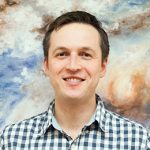
Dr. Trevor Tchir
Arendt’s Theory of Political Action
When Dr. Trevor Tchir defended his dissertation at the University of Alberta on German political theorist Hannah Arendt (1906 – 1975), he thought his research on the Jewish prisoner of war was over. However, a resurgence of right wing populism in Europe and North America, as well as the publishing of the Truth and Reconciliation (TRC) Commission of Canada’s Calls to Action, have him revisiting her political philosophy years later.
Tchir’s interest in Arendt was first piqued by his love for music. During his undergraduate days at the University of Ottawa, he encountered her readings which connected political theory to artistic performance. “As a musician, that really interested me. She rejuvenates a Greek understanding of political action in terms of an analogy of artistic performance. That’s really where it all began. And the more I got into what she had written, the more interested I became.” From there, Tchir devoted his graduate degrees to understanding, analyzing, and critiquing Arendt’s life and opinions.
Now an Assistant Professor of Political Science in the Department of Law and Politics at Algoma University in Sault Ste. Marie, Tchir has published his first book, entitled Hannah Arendt’s Theory of Political Action. His book focuses on Arendt’s defense of political freedom, human dignity, and plurality in the face of totalitarianism, and offers a new interpretation of her theory of political action and identity.
Tchir claims that Arendt’s thought is more relevant than ever. “There’s a real rejuvenation in Arendt right now as people try to grapple with the rise of populism and ‘us vs. them’ style politics. Today’s students of politics can find in Arendt’s thought reflections to inspire the difficult but crucial tasks of defending the human rights of refugees, determining terms of political recognition that respect difference, seeking political reconciliation, contesting abuses of sovereign state power, protecting public spaces and opportunities for meaningful citizen engagement, and deliberating publically across different perspectives in ways that might overcome violent conflict.”
Since working at Algoma University over the past three years, Tchir’s interest in Indigenous peoples has also deepened. “I’ve always been interested in Indigenous politics, however, working on the site of a former residential school has strengthened this interest. My latest research is about applying some of Arendt’s political theory to the processes of truth and reconciliation and a rejuvenation of the treaty relationship between Canada and Indigenous peoples.”
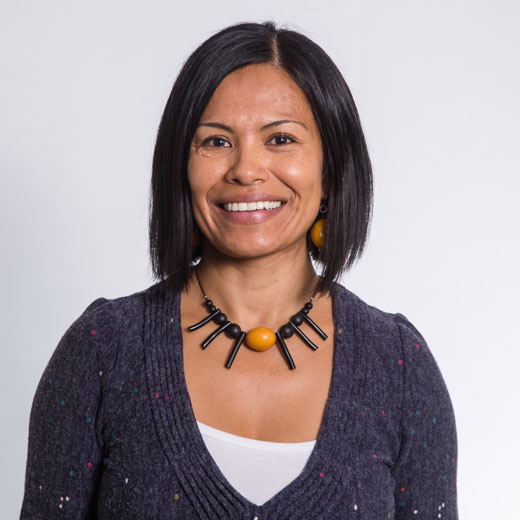
Dr. Vivian Jimenez-Estrada
Credentials:
BES
MES (York University)
PhD University of Toronto, Ontario Institute for Studies in Education (OISE)
Specialization:
Global and Hemispheric Indigenous Studies; Indigenous and Qualitative Research
Methodologies; Decolonizing, Anti-racist, and Indigenous Theories and Discourse; Indigenous
Feminisms; Environmental Sociology, Sociology of Education, Race, Indigeneity and Racialization.
Research Support Fund Grant
ABOUT THE PROGRAM
Indirect Costs of research are university expenditures across various research projects which can be difficult to assign to any specific projects. These indirect costs exist whether research applications or proposals are successful. Some of the main institutional expenses considered to be indirect costs to research are; utilities, services such as finance, payroll, human resources, IT services as well as the various costs of meeting regulatory and ethical requirements.
The Research Support Fund (formerly known as the Indirect Costs Program) was introduced in 2003 as part of the federal government’s strategy to make Canada one of the world’s top countries in research and development. It currently has a budget of nearly $400 million and serves more than 150 postsecondary institutions across the country. The fund helps Canadian post-secondary institutions with expenses associated with managing research funded by the three federal funding agencies:
- Social Sciences and Humanities Research Council of Canada (SSHRC)
- Natural Sciences and Engineering Research Council of Canada (NSERC)
- Canadian Institutes of Health Research (CIHR)
The Research Support Fund reinforces this research investment by helping institutions ensure that their federally funded research projects are conducted in world-class facilities with the best equipment and administrative support available.
Research Support funds provided are to assist with indirect costs in five major categories:
- Research Facilities
- Research Resources
- Management and administration of an Institution’s research enterprise
- Regulatory requirements and accreditations
- Intellectual property
Research Support Fund grants are calculated annually based on a 3-year rolling average of an institution’s share of Tri-Agency revenue.
For more information:
RESEARCH SUPPORT FUND AT ALGOMA UNIVERSITY
Proposed Research Support Fund Grant 2023-2024
Algoma University has been granted $193,860 for the 2023/2024 academic year by the Federal Government’s Research Support Fund. This program helps to fund the indirect costs associated with research.
The Research Support Fund helps universities, colleges, and their affiliated research hospitals and institutes to maintain world-class research environments. The fund can be used to maintain modern labs and equipment; provide access to up-to-date knowledge resources; provide research management and administrative support; meet regulatory and ethical standards; or transfer knowledge from academia to the private, public and not-for-profit sectors. The program helps to reinforce the research investment made by the federal government in the areas of health sciences, engineering, natural sciences, social sciences and the humanities through its three research granting agencies, CIHR, NSERC and SSHRC. More information can be found at this link: Research Support Fund
This year, Algoma University will be using its Research Support Fund allotment to increase capacity in our Office of Research and Innovation. We will allocate $193,860 (100%) of the Research Support Fund to help support the growth of our Office of Research to hire the following positions; Research Facilitator, Research Outreach Officer and Researcher Assistant.
Latest News
Céline and The Next Right Thing
Posted Mar 18, 2021
Céline Perron, Law & Justice, 2016 I remember my time at Algoma University as a time when I first learned...
